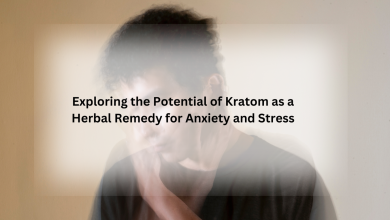Unlock the Secrets of Well-Being with These 9 Body Hacks

We all want to feel our best, and now you can with these awesome body hacks. Unlock the secrets of well-being and live fully with these nine body hacks. They’ll not only help you look and feel great but also help you gain a new perspective on life. Discover how these simple hacks can improve your overall health and well-being.
1) Hydrate for Better Health
Staying hydrated is crucial for maintaining a healthy lifestyle. Water plays a vital role in our bodies, from regulating temperature to aiding digestion and flushing out toxins. Dehydration can lead to fatigue, headaches, and even impair cognitive function. Make sure to drink plenty of water throughout the day to stay properly hydrated. But don’t limit yourself to just plain water; incorporate other hydrating options like herbal tea or infused water for added flavor. Additionally, be mindful of your water intake during workouts or hot weather, as you may need to increase your fluid intake. Remember, a well-hydrated body is a happy and healthy body.
2) The Power of Deep Breathing
Deep breathing is a powerful tool that can transform your health and well-being. When we take slow, deep breaths, we activate the parasympathetic nervous system, which promotes relaxation and reduces stress. Deep breathing also increases oxygen flow to the brain, enhancing mental clarity and focus. By incorporating deep breathing into your daily routine, you can experience numerous benefits, including improved digestion, reduced blood pressure, and enhanced immune function. Whether you practice deep breathing during meditation, yoga, or simply throughout the day, it’s a simple yet effective way to cultivate a healthy lifestyle and bring a sense of calm and balance.
3) Eat Your Way to a Better Mood
What we eat can significantly impact our mood and overall well-being. Incorporating nutrient-rich foods into our diet is key to achieving a healthy lifestyle. Foods rich in omega-3 fatty acids, such as fatty fish, walnuts, and flaxseeds, have been shown to reduce symptoms of depression and improve overall mood. Additionally, foods high in antioxidants, like berries and dark chocolate, can help reduce inflammation and promote a positive mood. Incorporating whole grains, lean proteins, and plenty of fruits and vegetables into your diet can also provide essential vitamins and minerals that support brain health and boost mood. So, next time you’re feeling down, remember that what you eat is crucial to your emotional well-being.
4) How Exercise Can Boost Brainpower
Exercise isn’t just about toning your body or shedding those extra pounds; it also profoundly impacts your brainpower. Regular physical activity can improve your cognitive function and boost your brainpower. When you exercise, your brain releases chemicals that promote the growth of new brain cells and improve the connections between existing cells. It leads to enhanced memory, increased focus, and improved problem-solving skills. Not only that, but exercise also increases blood flow to the brain, delivering vital oxygen and nutrients that nourish your brain cells. So, whether going for a run, taking a dance class, or hitting the gym, incorporating exercise into your routine can supercharge your brain and help you reach new mental clarity and performance levels.
5) Mindful Meditation for Improved Focus and Concentration
In today’s fast-paced world, staying focused and maintaining concentration can be challenging. That’s where mindful meditation comes in. Mindful meditation is a practice that involves paying attention to the present moment without judgment. By incorporating this simple technique into your daily routine, you can experience improved focus and concentration. Mindful meditation helps calm the mind, reduces distractions, and enhances your ability to stay present and focused on the task. Just a few minutes of mindful meditation each day can significantly improve your ability to concentrate and achieve your goals.
So why not give it a try? Take a few moments each day to sit in a quiet space, close your eyes, and focus on your breath. Allow any thoughts or distractions to come and go without judgment, and gently bring your attention back to your breath. With regular practice, you’ll notice an improvement in your ability to stay focused and maintain concentration throughout the day. So, why give mindful meditation a try and unlock your true potential?
6) Get a Better Night’s Sleep with These Simple Tricks
Sleep is essential for our overall health and well-being, yet many of us struggle to get a good night’s rest. If you’re tired of tossing and turning, these simple tricks can help you improve your sleep quality and wake up refreshed. First, establish a bedtime routine, including winding down before bed, avoiding electronics, and creating a relaxing environment. Make sure your bedroom is dark, quiet, and at a comfortable temperature. Practice good sleep hygiene by avoiding caffeine and heavy meals before bed. Finally, consider incorporating relaxation techniques, such as meditation or gentle stretching, to calm your mind and prepare your body for sleep. By implementing these easy tricks, you can finally say goodbye to sleepless nights and hello to restful, rejuvenating sleep.
7) Optimize Your Posture for Better Overall Health
Proper posture is essential for maintaining good overall health. When we sit or stand with correct alignment, we reduce the strain on our muscles and joints, promoting better balance and reducing the risk of injuries. Optimal posture also allows for proper breathing and circulation, improving overall energy levels and reducing fatigue. Start by becoming aware:
- Start body alignment throughout the day to optimize your posture.
- Ake a conscious effort to sit and stand up straight, with your shoulders back and your head aligned with your spine.
- Incorporate exercises and stretches targeting your core and back muscles to improve your posture.
y prioritizing good posture, you can experience better overall health and feel more confident in your daily activities. So, stand tall and reap the benefits of proper posture!
8) Relaxation Techniques to Reduce Stress and Anxiety
In today’s fast-paced and stressful world, finding ways to relax and reduce stress is crucial for our overall well-being. Luckily, many effective relaxation techniques can help you find calm and peace amidst the chaos. One powerful technique is deep breathing exercises, which can activate your body’s natural relaxation response. Another great option is practicing mindfulness, which involves focusing on the present moment and accepting it without judgment. Other relaxation techniques include progressive muscle relaxation, guided imagery, and aromatherapy. Incorporating these techniques into your daily routine can reduce stress and anxiety and experience greater inner calm and balance.
9) Harness the Power of Visualization to Achieve Your Goals.
Visualization is a powerful tool to help you achieve your goals and manifest your desires. By creating a vivid mental image of what you want to achieve, you can program your mind for success. Visualizing yourself acing that presentation, crossing the finish line of a marathon, or achieving financial abundance can make it all possible. By consistently visualizing your goals, you send a clear message to your subconscious mind, which then works to make your vision a reality. So take a moment each day to close your eyes and imagine yourself living your dreams. Allow yourself to feel the excitement and joy as if you have already accomplished your goals. With the power of visualization, you can turn your dreams into tangible, achievable realities.





